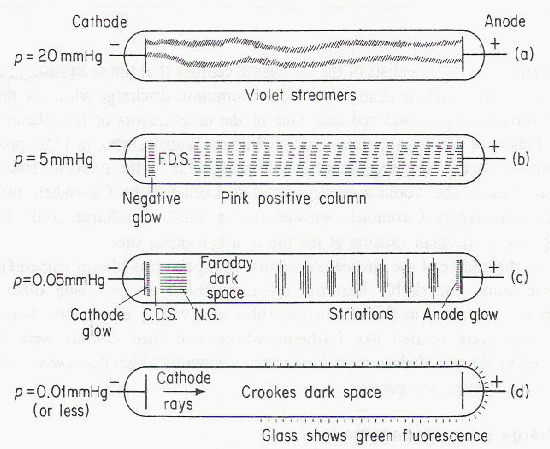If a potential difference of 1000 V or more is applied between two electrodes of a tube 15 cm or so long containing low pressure air, strange phenomena may be observed. Air is pumped out of the tube gradually.
When the pressure reaches 20 mm mercury, about one quarter of atmospheric pressure, wavy violet streamers are produced. Further reduction of pressure turns the streamers into a broad pink continuous discharge which fills the space between the electrodes.
At 5 mm mercury of pressure, a dark region, called the Faraday dark space, F.D.S. Actually dark blue in colour. In (b) below, appears near the cathode and divides the tube into, with the pink continuous discharge pushed to the right. The colour of discharge produced is characteristic of the gas used. Air produces a pink discharge, while mercury vapour produces a green discharge.
Further reduction of pressure shrinks the pink region further and begins to break up into striations, (c) below. A second dark region, called the Crookes dark space, appears near the cathode. The length of the Faraday and Crookes dark spaces depends only on the pressure and not the length of the tube. The remainder of the tube is filled with the pink discharge.
Reduction of the pressure to 0.01 mm Hg results in the Crookes dark space filling the whole tube, (d) below.

